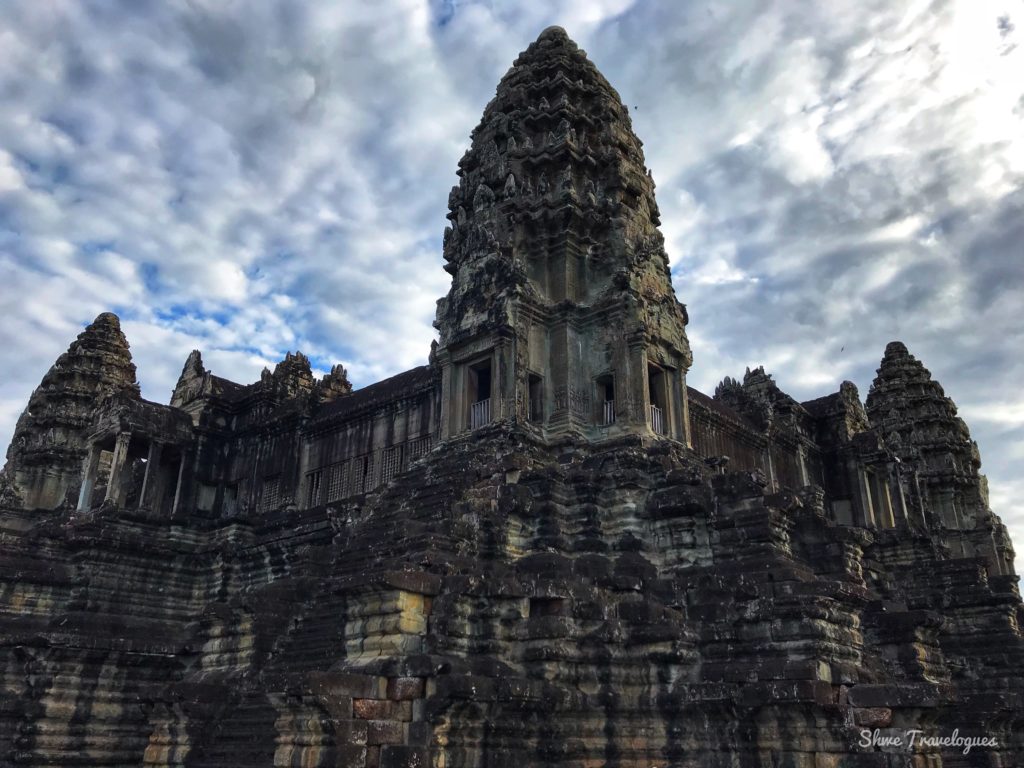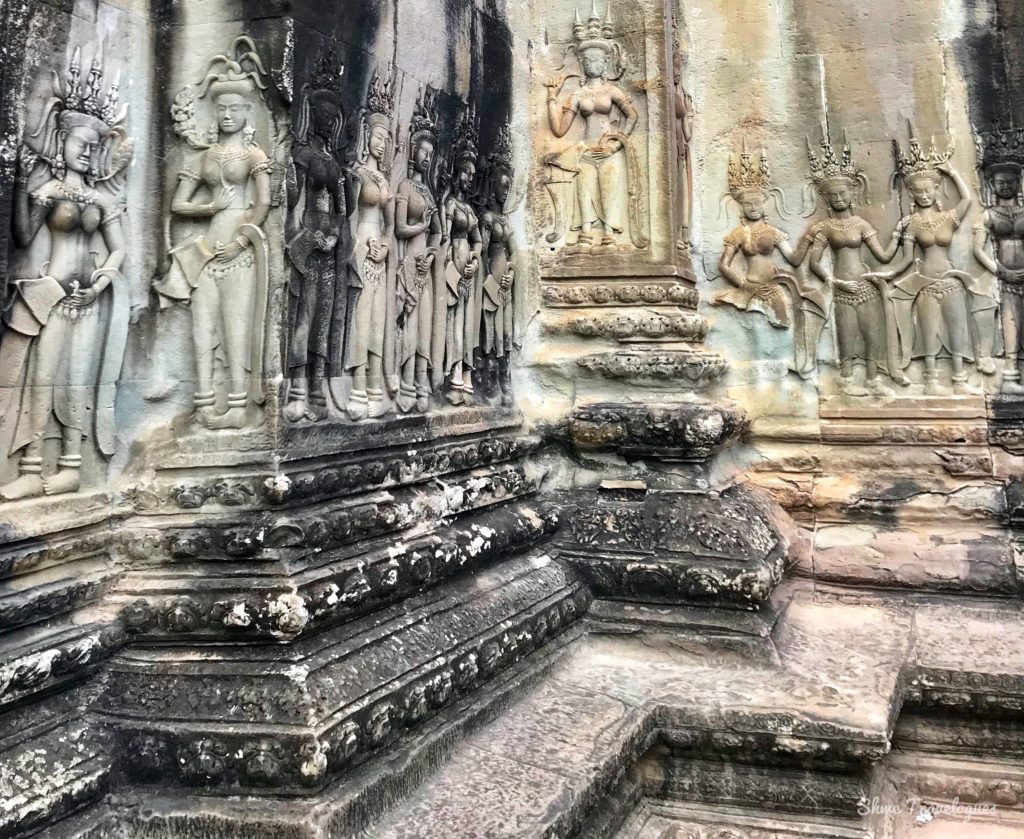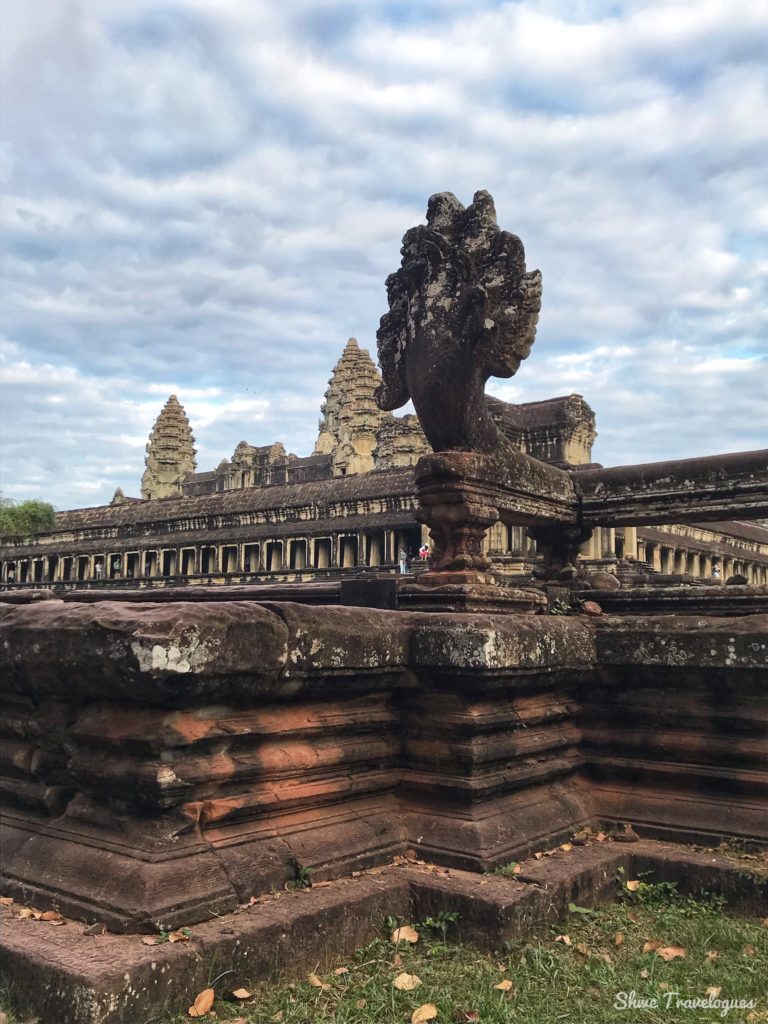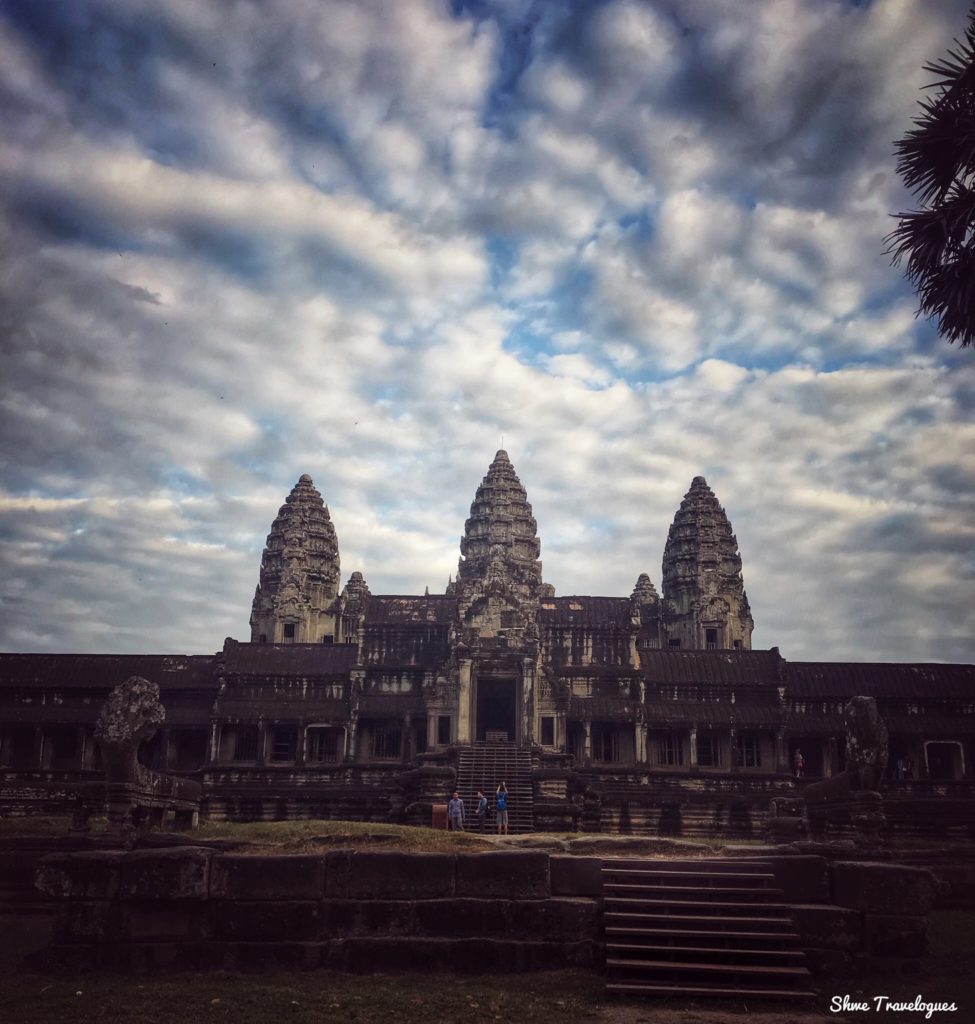Angkor Wat, a Khmer term literally translating to “Temple City” is an architectural marvel. Magical and mysterious the temple was built over approximately 3 decades in the 12th century. It stands tall today as the world’s largest religious structures spread across 500 acres.
Angkor Wat Genesis
Angkor city has been the royal center of the Khmer dynasty for centuries and was one of the largest and most prosperous among South East Asia in the early years. King Suryavarman II, an aggressive emperor of the Khmer dynasty had expanded his empire all the way to the south to today’s Gulf of Thailand and east to the Kingdom of Champa (what we know as Vietnam today). He wanted to build a monument like no other in the state capital as a trophy to the successful kingdom. Built in the 12th Century and officially titled Pinsulok or Vrah Vishnulok, it was a temple dedicated to Lord Vishnu including several sculptures of Suryavarman himself as Vishnu.

It is rumored to have been built as a funerary temple for King Suryavarman II given the temples unusual orientation towards the west rather than east. Several bas-relief sculptures are also oriented in the anti-clockwise direction similar to traditional Hindu Funerary practices. The orientation of the temple to the west is also said to symbolize the setting sun as death. However, since the King himself died at war, whether or not the temple holds his ashes interred remains unanswered.
Read more about Travelling to Angkor Wat
Mythological Symbolism
Angkor Wat, although a religious monument boasts of engineering supremacy in terms of channeling underground water through reservoirs, canals and moats. These engineering feats ensured availability of the most critical resource for the prosperity of the city of Angkor – Water. As a city that heavily relied on rice cultivation, water was a necessary element to sustain living.

However, the moat signified more than that. The temple was said to have been built to represent Mount Meru which is considered to be the “Abode of Gods” in Hindu mythology. The five towers of Angkor Wat represent the mountain peaks that lie just beyond the Himalayas and the moat surrounding the temple complex represents the oceans at the edge of the world. The entrance to the Angkor Wat temple itself is through a 188
The symbolism does not stop there. There are several carvings and sculptures all along the corridors within the temple telling Hindu fables and stories the biggest of them being the Churning of the Ocean. The bas-reliefs in the monument are supposed to be one of the most intricate and detailed carvings of Hinduism, ancient Khmer stories, representation of the Hindu epics Ramayana and Mahabharata.
History
As magnificent as the monument itself, Angkor Wat has a history that is nothing short of a thriller. Angkor remained the capital city for a while even after King Suryavarman II’s demise.

However, the Cham people of Indochina who were forced into submission by the earlier Khmer kings fought back later in the 12th century and sacked the capital city of Angkor. The then king Jayavarman VII is said to have converted Angkor Wat to a Buddhist temple as he felt that the Hindu Gods had disappointed and failed the people of the Kingdom. The capital was then moved to Angkor Thom or Bayon nearby. All the Hindu deities and carvings in the temple were gradually replaced with Buddhist Art. Read more here

With every passing generation, Angkor Wat became more and more neglected. While the Theravada Buddhist monks were maintaining the Angkor Wat, rampant lack of use led to several maintenance issues in the vital hydraulics beneath the great city. There are geological evidences of frequent floods as well. Gradually, the Khmer empire moved away, abandoning the once mighty Angkor by the 15th century.
In the middle of the 19th century, a French Explorer, Henri Mouhot, traveled extensively in South East Asia discovering exotic Jungle Insects, when he came upon the Angkor Wat hidden beneath excessive forestation. He wrote an entry in his journal which is said to have sparked the interest of travelers till date
“One of these temples, a rival to that of Solomon, and erected by some ancient Michelangelo, might take an honourable place beside our most beautiful buildings. It is grander than anything left to us by Greece or Rome”
Henri Mouhot
Angkor Wat Today
Angkor Wat was designated as the UNESCO World Heritage Site and was added to the list of sites in danger in the 19th century. However, restoration efforts were increased post that and the site is officially removed from the danger list in the early 21st century. Read more here

From just a few thousands of visitors in the 18th century, Angkor Wat nearly attracted 2.5 million visitors in 2017. What began as an ambitious project of an aggressive Khmer Emperor in the 12th century stands tall as the Nation’s pride in the Kingdom of Cambodia even today. The monument is also a part of Cambodia’s national flag.
An architectural marvel that survived forest overgrowth, earthquakes, war, floods and the test of time, the Angkor Wat is a tourist’s paradise. Travel back in time as you walk past the glorious sculptures that tell stories of the centuries gone by and soak in the richness of the heritage we are blessed to witness today.

